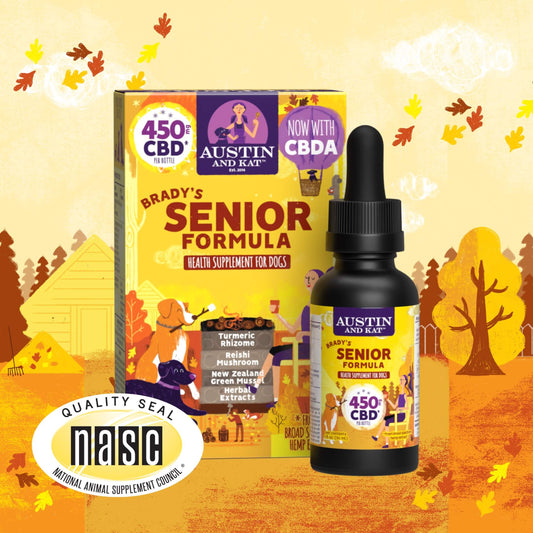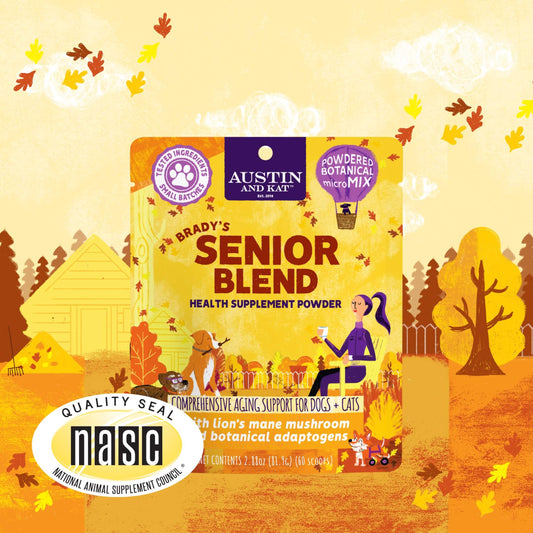
Not All Aging Looks the Same
It’s easy to recognize stiff joints or slower walks, but aging often shows up in quiet, unexpected ways. Keep an eye out for:
- Hesitation on stairs or jumping up
- More time spent sleeping or resting
- Slower recovery after play or exercise
- Changes in gait or posture
- Increased irritability or withdrawal
- Confusion or hesitation in familiar environments
- Accidents in the house despite prior training
Everyday Moments Matter
Just like people, dogs don’t only show signs of aging during dramatic moments. You might first notice changes during daily routines—more reluctance to get up in the morning, needing longer to stretch, or skipping playtime altogether. Paying attention to these patterns is the first step to helping your dog age with dignity and grace.
Your Dog’s Unique Signals
Some senior dogs become more clingy, others more withdrawn. Some slow down physically but stay mentally sharp, while others lose a bit of their cognitive spark. Observing your dog’s “normal” and staying aware of subtle changes gives you the information needed to adjust their care as they age.
Paws for Thought:
Have you noticed your dog hesitating in places they used to move through easily? Track the little moments—like how they greet you, move around the house, or respond to commands. These can provide powerful clues about how they’re feeling.

A Foundation for Lifelong Wellness
When used consistently, Brady’s Senior Formula offers ongoing nutritional support that helps dogs feel more agile, alert, and balanced. Think of it like brushing your teeth or eating healthy—not just something you do when there’s a problem, but a foundation for overall wellness.
Daily use offers key advantages:
- Cumulative Effects: Ingredients like turmeric, green-lipped mussel, and ginseng build up in the system to help support joint health, cognitive function, and immune resilience over time.
- Proactive Protection: Rather than waiting for stiffness or confusion to worsen, daily support can help delay or mitigate the signs of aging.
- Routine-Based Benefits: Dogs thrive on routine, and the act of giving a supplement consistently—especially when combined with other care strategies—can make a big difference.
Many pet parents choose to start early—not because their dog is showing signs of aging, but because they want to stay ahead of them. Supporting your dog before issues arise can be one of the most powerful ways to help them stay vibrant, mobile, and mentally sharp well into their senior years.

Meeting Specific Challenges
Using Brady’s Senior Formula during specific situations is just as important as daily use. Aging doesn’t always follow a predictable path—and there are times when extra support can make a major difference in how your dog feels and moves.
Immediate Support: For physically or emotionally demanding events—like vet visits, grooming, travel, or cold weather—adding fast-acting support can help your dog stay comfortable and confident through the experience.
Flexible Approach: Some senior dogs are stable most days but struggle with certain patterns: colder mornings, overstimulation during gatherings, or difficulty bouncing back after active play. Adjusting support on those days ensures they don’t fall behind.
Targeted Response: Situational use lets you respond precisely—whether your dog needs help with post-activity inflammation, nighttime restlessness, or recovery after a long outing.
Complementary Approach: Most pet parents see the best results when they use Brady’s daily for steady support, then layer in extra servings or different formats during higher-stress moments. This adaptive routine respects your dog’s changing needs without overloading their system.

Create Safe, Comfy Spaces
As dogs age, their physical environment plays a larger role in how safe, confident, and comfortable they feel. The right adjustments—made thoughtfully—can reduce strain on joints, prevent accidents, and help your dog navigate their world with greater ease and dignity.
Make Spaces Soft, Stable, and Accessible
Older joints are more sensitive to pressure, temperature, and instability. Hard floors, sharp corners, or elevated surfaces can all become hazards.
- Choose orthopedic beds that cushion joints and insulate from cold floors. Memory foam or egg-crate padding works well.
- Avoid drafty areas—move beds away from doorways, windows, or vents.
- Lay down area rugs, runners, or yoga mats across slippery floors to help with traction, especially on tile or hardwood.
- Use pet stairs or ramps for access to beds, couches, or cars. Even a 12" jump can strain aging hips when repeated.
- Keep food and water bowls raised just slightly to avoid neck compression—especially for dogs with arthritis, spine issues, or tremors.

Engage the Body & Mind
Cognitive health is just as important as physical comfort. Puzzle toys can keep their brain working, while scent-based games stimulate natural instincts. Positive reinforcement training maintains mental sharpness and confidence. But remember:
Be Predictable
Older dogs thrive with consistency:
- Keep mealtimes, walk times, and bedtime consistent
- Use visual and verbal cues when transitioning between activities
- Introduce new environments slowly
Support Their Dignity
Give your dog choices whenever possible—where to nap, when to go outside, how to interact. This helps them retain agency and comfort as they age.
Aging doesn’t mean stillness. In fact, regular movement is critical to maintain muscle tone, joint function, and mental clarity. The key is to shift from high-energy bursts to steady, low-impact engagement.
- Shorter, more frequent walks are better than one long daily outing. Aim for 10–20 minutes, 2–3 times a day, rather than a single hour.
- Warm up and cool down with gentle leash walking or free movement before and after play or walks. Let them set the pace.
- Avoid jarring movements—no fetch on pavement, no jumping for toys, no running downstairs. Instead, encourage stretching, walking, or soft games.
- Swimming is ideal if your dog enjoys it. It builds muscle and improves circulation without stressing the joints. Use a fitted life vest for safety and confidence.

How Different Formats May Support Healthy Aging
Each format in the Brady’s Senior Formula lineup was created to support your dog’s aging journey in a unique way. Choosing the right one depends on your dog’s routine, sensitivities, and where they need the most help. Whether you’re looking for daily maintenance, situational support, or a long-term wellness foundation, there’s an option (or combination) that fits.
Chews – Soft, palatable, and pre-measured for daily ease. These are ideal for dogs who thrive on routine and benefit from consistent joint, brain, and immune support. Their slow-release design makes them perfect for all-day comfort—especially after activity or in the evening as part of a wind-down routine.
Oil – Fast-acting and flexible, the oil is ideal for on-the-spot support. It’s easy to dose based on your dog’s size or needs, making it great before cold walks, travel, or stressful appointments. It also suits dogs with dental sensitivities or restricted diets.
Powder – A CBD-free blend of adaptogens, antioxidants, and key nutrients, the powder acts as a foundational layer for long-term resilience. Stir it into meals to support cellular energy, mobility, organ health, and stress regulation—especially helpful for dogs with sensitive systems or on medications.
How to Use Them Together
- Daily foundation: Use powder to build long-term support from within.
- Ongoing support: Layer in chews for routine coverage and recovery.
- Situational boost: Add oil when extra comfort or focus is needed.

Complementary Benefits of Layering Formats
Many pet parents find the best success using formats together. For example: powder in the morning for foundational support, oil before a hike, and a chew in the evening to support recovery. Each format supports the other—giving your dog round-the-clock comfort and mobility.
Timing Considerations
Oils typically have the fastest onset (20–40 minutes), chews last several hours, and powders provide steady support when used daily. When used together, these formats help buffer your dog through transitions, aging, and activity with a thoughtful, layered approach.
Helping Dogs Stay Mobile
with Botanicals and Whole-Body Support
From bounding puppies to dignified seniors, every dog deserves the comfort of free, confident movement. The Get Up and Go Collection—created in honor of our dog Bakko—blends thoughtfully selected botanicals, powerful joint-supportive ingredients, and modern hemp innovations to nourish your dog’s mobility from the inside out.
Whether you’re just beginning your dog’s joint care journey or looking to optimize an existing plan, our goal is the same: keep those tails wagging, legs moving, and adventures going strong.
Most pet parents don’t stick to just one format—and that’s a good thing. Combining formats allows you to meet your dog where they are each day, not just in general.
Here’s how a layered plan might look:
- Start the day with powder to provide baseline support for joints, cognitive function, and cellular health.
- Use oil before activity, especially if your dog struggles on cold mornings, long walks, or during overstimulating environments.
- Finish the day with a chew to help with recovery, stiffness, or evening pacing.
This kind of rhythm gives your dog round-the-clock care—supporting the physical, mental, and emotional aspects of aging with tools that adapt as their needs shift.




















